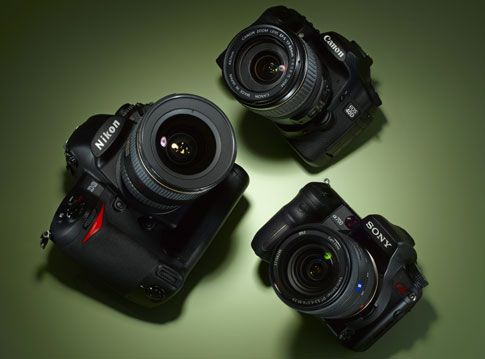Since the first person to buy a digital camera, a mode for taking pictures is always wearing AUTO mode. The first reason for this mode is a mode of the most easy to use and relatively reliable in a variety of situations without fear of the picture will be disappointing. The second reason may be due to chance on a digital camera that is available only AUTO mode only, thus 'forced' could not be more creative with manual mode. Indeed, in general digital cameras manifold point-and-shoot is designed very simple and does not come with many features like manual prosumer cameras.
- Manual sensitivity / ISO, meaning that the camera option to determine the sensitivity of the sensor / ISO ranging from AUTO, 100, 200, 400 and 1600. There are even cameras to determine the full value is AUTO ISO, the ISO value the camera was low at 50, and there was a camera that could achieve very high ISO (3200, 6400 to 10000).
- Advance Shooting Mode: P (Program), A (Aperture Priority), S (Shutter Priority), M (Manual). More will be discussed later.
- Exposure Compensation (Ev), is used to compensate the exposure to the light or dark. If the exposure determined by the camera is not to our liking, this feature can help. Raise Ev positive direction to make the photo lighter and lower to get a darker picture. Usually the level / step value Ev is made in multiples of 1/3 or 1/2 step.
Manual focus, a feature which is not so often found in compact cameras. Useful when auto focus on the camera is unable to find a focus, as in the photo objects do not have enough contrast for the camera to lock focus (because of auto focus camera work, based on contrast detection).
Manual White Balance, to get the color temperature according to the original. Various sources of different light sources have a color temperature (expressed in Kelvin) is different, so errors in identifying the source of white light will make menjdi too blue or too red. Generally, all digital cameras, including camera phones have had an auto White Balance can be adapted to a variety of light sources. However, your camera should have the discretion to set the white balance manually as Daylight, Cloudy, Tungsten, Fluorescent and manual adjust.
Flash intensity level, is useful to vary the brightness of the flash on the camera. It is sometimes useful when the images were taken with the flash was too bright or underexposed it. Since photography is a game of light (exposure) in which the three elements of the camera determines the shutter speed (shutter speed), aperture (aperture) and ISO, the most important feature in my manual is manual features P / A / S / M manual and features ISO (as far as I have observed, if a camera has a feature P / A / S / M, the camera also features a manual ISO).
In principle, the camera (and the photographer) will try to produce an image that has a proper exposure. That is, the resulting image should not be too dark or too bright. Dark brightness images created by the camera are determined from the three factors, where:
- Shutter charge of organizing how long the light will hit the sensor (or film in the analog camera), expressed in seconds. The shorter the shutter speed the less light coming in, and vice versa. Usually the camera has shutter speeds ranging from 30 seconds to 1/4000 sec.
aperture has a duty to set more or less light into the lens (the increase or decrease the size of the diaphragm), expressed in the form f-number scale fractions from largest to smallest (eg, f/2.8, f/3.5, f / 8 etc.). - Small f-number value indicates a large aperture, medium large f value showed a small aperture. Maximum and minimum values of the aperture of a camera lens is determined, and this value will change with the lens focal distance.
- ISO determines the level of sensitivity of the sensor to light so that the higher the ISO the more sensitive the sensor is to light despite the risk of increased noise in images. ISO is a complement factor exposure component in addition to shutter and aperture, especially when combined shutter and aperture have not managed to get the proper exposure value.

No comments :
Post a Comment